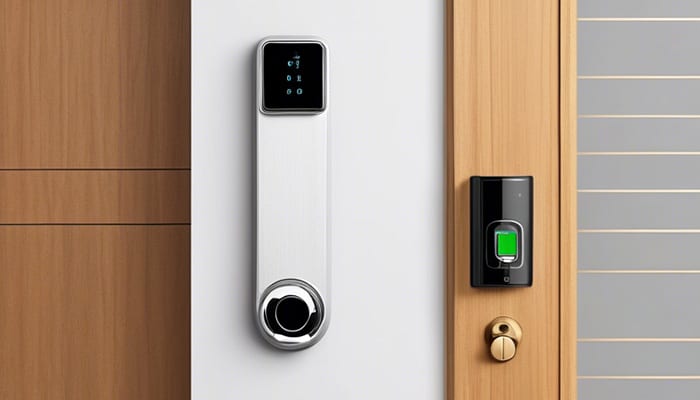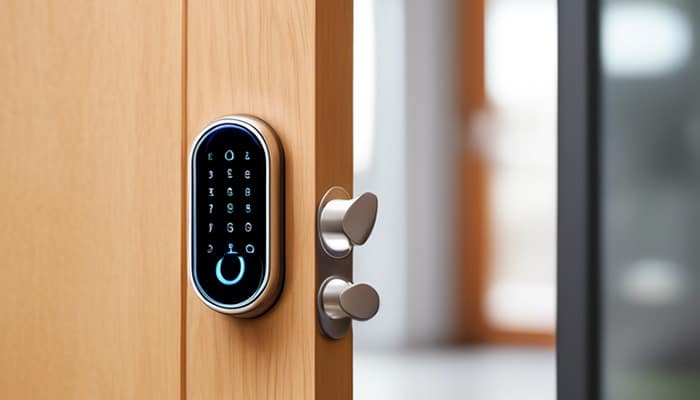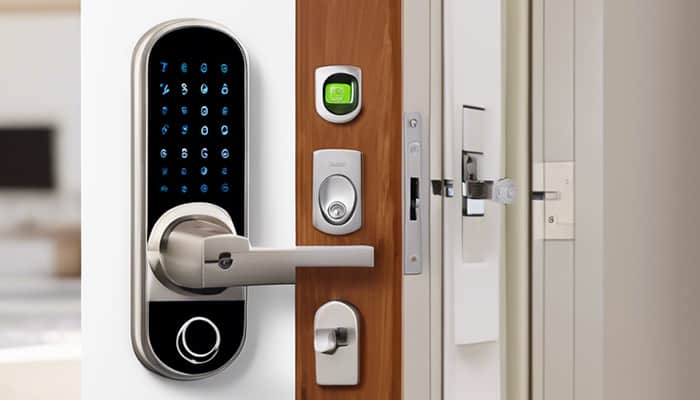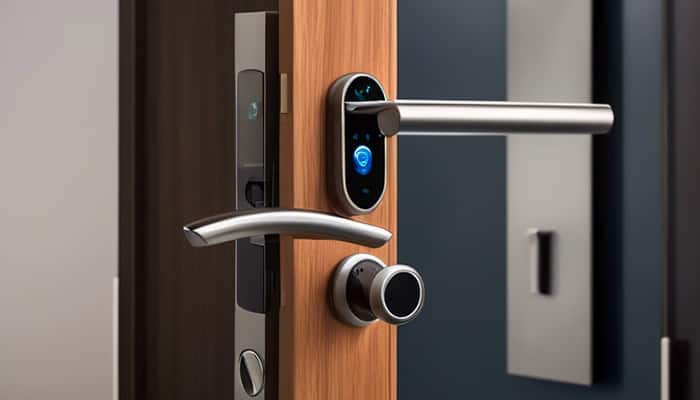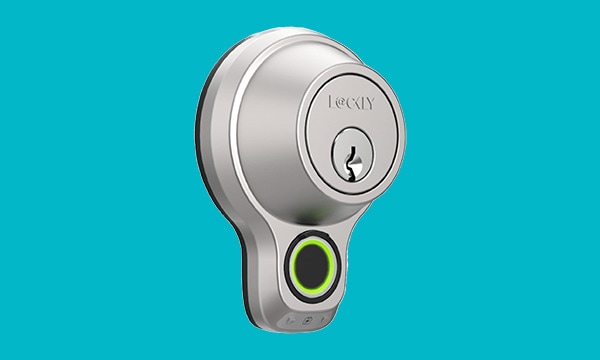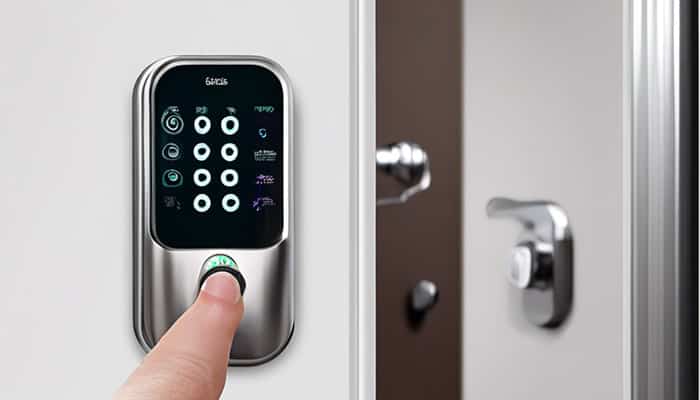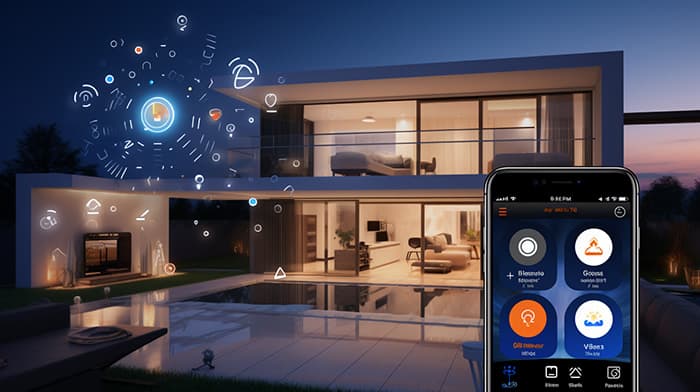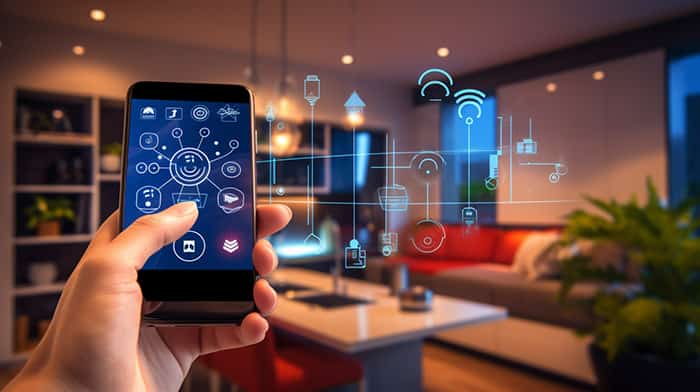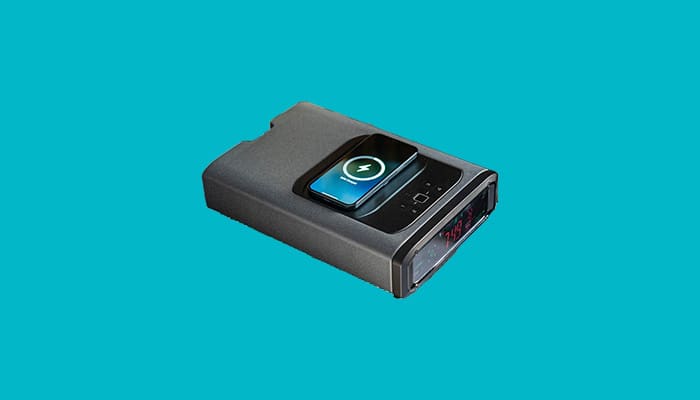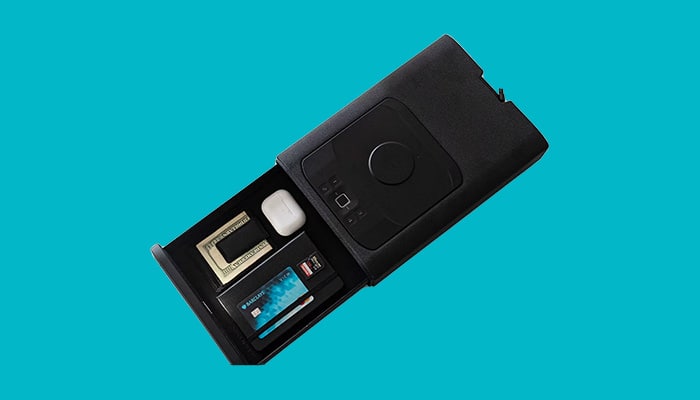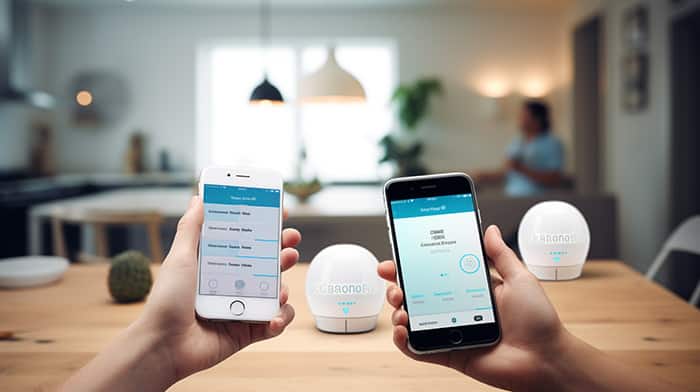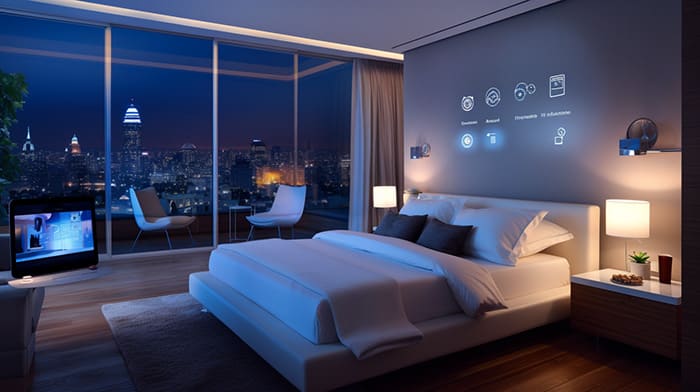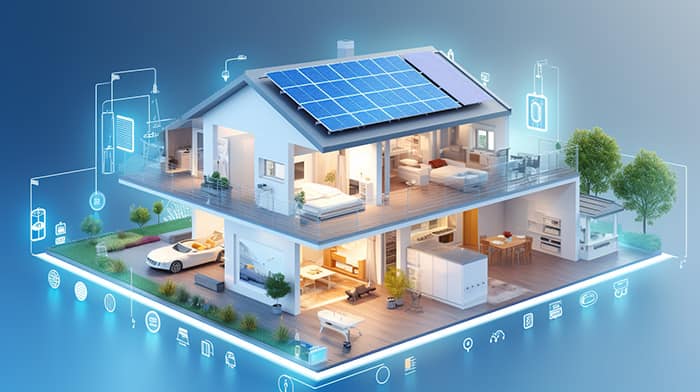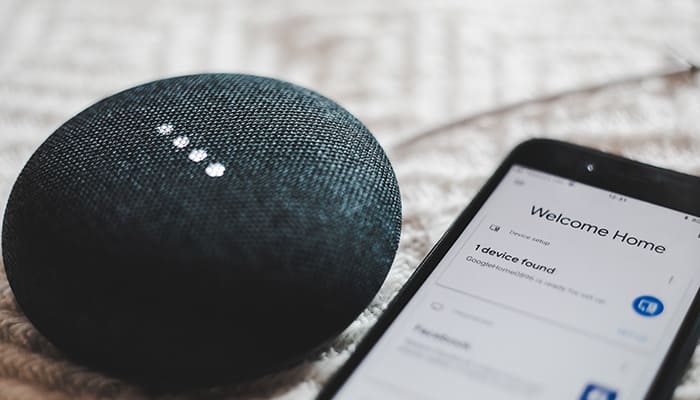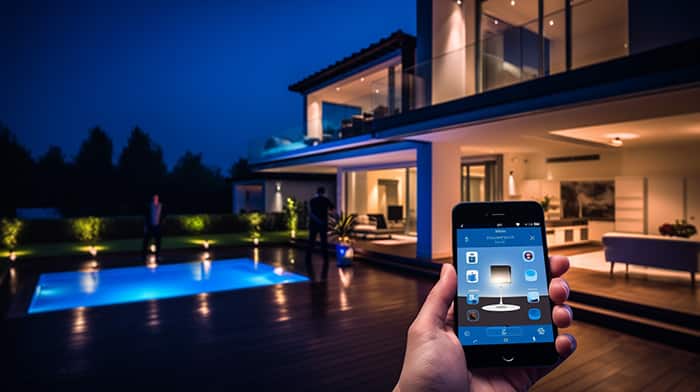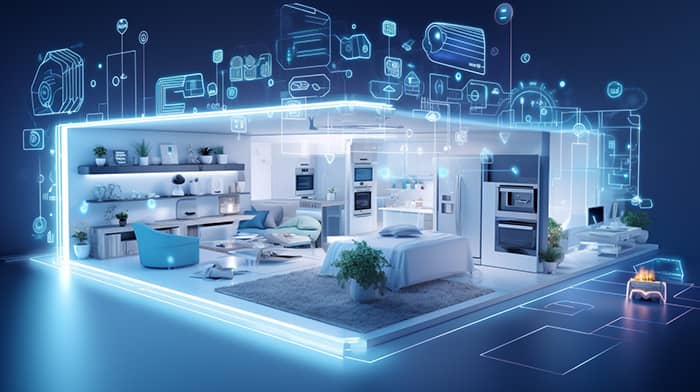Maximizing Privacy: Essential Tips for Securing Your Smart Home
Securing Your Smart Home: Best Practices for Protecting Privacy and Security
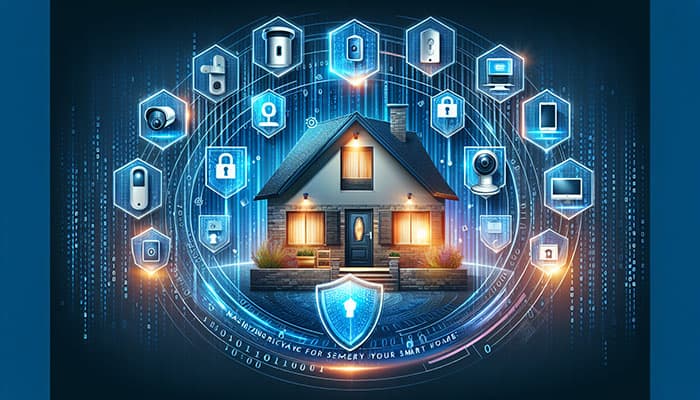
Have you ever considered the digital ears and eyes that fill our homes in the age of smart technology? As exciting as the world of smart homes is, with convenience and efficiency at our fingertips, privacy remains a paramount concern. Smart homes should be safe havens, not a playground for cyber threats – which is why securing your private haven is an endeavor I am deeply passionate about. In this article, I’ll share essential tips for fortifying the privacy and security of your smart home. My aim is to empower you to take control of your personal space in the digital realm. We’ll explore practical strategies such as strengthening your home Wi-Fi network, implementing robust passwords etc.
Understanding the Risks Associated with Smart Home Devices

Understanding the potential risks associated with smart home devices is the first step in securing your digital abode. Here, we’ll outline the vulnerabilities and types of attacks that could compromise your smart things privacy:
Vulnerabilities of Smart Home Devices:
- Inadequate Security Measures: Many smart devices lack strong encryption and authentication, which are critical for preventing unauthorized access. This can lead to personal data exposure and unauthorized control of devices.
- Weak IoT Device Security: Devices that do not have the same level of security as Windows or Linux-based systems make up 80% of IoT devices, leaving them susceptible to attacks.
- Rapid Hacking: Some smart home devices can be compromised in under five minutes, with many users neglecting to change default passwords, leaving millions of devices at risk.
Common Types of Attacks:
- Data Breach and Identity Theft: Unauthorized access to personal information can lead to identity theft.
- Device Hijacking and Spoofing: Attackers may take control of smart devices, manipulating smart lights, TVs, or even unlocking doors.
- Distributed Denial of Service (DDoS): Overloading the network with traffic can disrupt the functionality of connected devices.
- Phlashing: Damaging the device firmware, potentially rendering devices inoperable.
Preventative Measures to Consider:
- Strong Passwords and Two-Factor Authentication: These are critical for protecting access to your devices.
- Regular Software Updates: Ensure the latest security protocols are in place by updating device software and firmware.
- Research Before Purchase: Investigate the security protocols of manufacturers to make informed decisions.
- Network Isolation: Keep your smart home network separate and monitor network traffic.
- Physical Security: Secure the devices themselves against unauthorized physical access.
Smart home devices continuously collect data, such as voice commands, interactions, and network activity. This data can be stored locally or transmitted to cloud services or third-party servers. It’s essential to:
- Review Privacy Policies: Always check the privacy policies and permissions of any service or app connected to your smart home devices.
- Educate Household Members: All users of the smart home system should be aware of the privacy and security practices.
- Use Advanced Security Measures: Employing firewalls, antivirus software, and VPNs can provide additional layers of security.
By understanding these risks and taking proactive steps, we can significantly enhance the security of our smart homes and protect our smart things privacy.
Creating a Secure Wi-Fi Network for Your Smart Home

Securing your Wi-Fi network is a critical step in protecting your smart home and ensuring smart things privacy. Here’s how you can set up your router and network to keep your smart home safe:
Step 1: Set Up Your Router
- Change Default Name (SSID): Avoid using personal information. Create a name that doesn’t give away your location or router model.
- Unique Password: Choose a strong password that is a mix of letters, numbers, and symbols. It should be different from the passwords you use elsewhere.
- Highest Level of Encryption: Use WPA2 or WPA3 encryption to protect your data. This is currently the strongest available.
Step 2: Network Segmentation
- Separate Wi-Fi for IoT Devices: Create a different network for your smart home devices. This limits the risk to your main network if one of the IoT devices is compromised.
- Guest Network: Set up a guest network for visitors. This keeps your main network more secure and prevents unauthorized access to your smart devices.
Step 3: Regular Maintenance
- Firmware Updates: Check for firmware updates for your router regularly and install them. This helps in fixing security vulnerabilities.
- Software Updates: Update the software for your IoT devices as soon as updates are available, as they often include security enhancements.
- Network Monitoring: Keep an eye out for any unfamiliar devices on your network. Remove any devices that you don’t recognize.
Additional Security Measures:
- Multi-Factor Authentication: Enable this feature to require a second form of identification beyond just a password when logging into your IoT devices.
- VPN Service: Consider using a VPN to encrypt your internet connection, adding an extra layer of security to your smart home network.
By following these steps, you’ll be taking significant measures towards securing your smart home and maintaining smart things privacy. Regularly reviewing and updating your security practices will help you stay ahead of potential threats.
Implementing Strong Passwords and Two-Factor Authentication

To maintain the integrity of your smart home and ensure smart things privacy, it is crucial to implement strong passwords and two-factor authentication (2FA). Here’s how to do it effectively:
Creating Strong Passwords
- Length and Complexity: Ensure your password is at least 12 characters long, combining upper and lowercase letters, numbers, and symbols to create a complex key that is tough to crack.
- Use Passphrases: A passphrase is a series of random words strung together. These are often easier to remember and just as secure, if not more so, than traditional passwords.
- Originality: Steer clear of common phrases, famous song lyrics, or movie quotes. Hackers often use these predictable patterns in their attempts to breach accounts.
- Password Managers: To keep track of your strong passwords, consider using a password manager. These tools can generate and store complex passwords for you, so you don’t have to remember each one.
- Secure Your Email: Given that your email can be a master key for password resets, it’s vital to protect it with a strong password of its own.
Implementing Two-Factor Authentication
- Extra Layer of Security: 2FA requires you to provide two different forms of identification before granting access to your account, significantly increasing security.
- Categories of Authentication:
- Something you know (password or PIN)
- Something you have (a phone to receive a one-time passcode, or a security key)
- Something you are (biometric data like a fingerprint or facial recognition)
- Methods of 2FA:
- Text or Email Codes: A one-time passcode sent to your phone or email.
- Authenticator Apps: These generate time-sensitive passcodes and are more secure than text or email because they’re not susceptible to SIM swapping or email breaches.
- Security Keys: Physical devices that provide the highest security level by using encryption to confirm your account’s association.
Setting Up 2FA on Your Accounts
- Sensitive Accounts: Prioritize setting up 2FA on accounts that handle sensitive information, such as banks, credit cards, email, social media, tax filing services, and payment apps.
- Account Settings: You can usually find the option to turn on 2FA in the security settings of your account. Follow the instructions provided to activate it.
By implementing these measures, you create a robust defense for your smart home ecosystem. Not only does this make it much harder for hackers to gain access to your accounts, but it also safeguards your smartthings privacy, ensuring peace of mind in our digitally connected world.
Ensuring Firmware and Software are Regularly Updated

To ensure the longevity and security of our smart home devices, keeping their firmware and software up to date is non-negotiable. Here’s what you need to know about maintaining the latest updates:
Why Firmware Updates Matter:
- Enhanced Security: With each update, manufacturers patch known vulnerabilities, making devices less prone to cyber threats.
- Performance Optimization: Updates can improve how your devices function, making them faster or more efficient.
- New Features: Enjoy additional functionalities and better device compatibility after an update.
- Regulatory Compliance: Stay up to date with the latest energy conservation regulations to ensure your smart home is not just smart, but also eco-friendly.
The Update Process:
- Backup Your Settings: Before initiating an update, save your current settings to avoid losing any preferences.
- Follow Manufacturer Guidelines: Each device may have a different update method; always refer to the user manual or official website for instructions.
- Regular Checks: Schedule a routine to check for updates, as they may not always be automatic.
Software Updates and Security:
- Bug Fixes: Software updates often include fixes that close security loopholes.
- Data Protection: By updating, you’re taking a proactive step in safeguarding your personal information from breaches.
- Operational Reliability: Updates ensure your smart home system runs smoothly without unexpected failures.
Industry Support for Updates:
- Legislative Backing: Authorities are working towards laws that will require manufacturers to provide updates for a set period after purchase.
- One-Touch Updates: Manufacturers aim to simplify the update process with easy-to-use interfaces, often allowing updates with just a single button press.
- Partnerships for Enhanced Performance: Some manufacturers collaborate with firmware specialists to add new functions or stabilize performance, especially after new software or game installations.
Remember, your smart things privacy is as secure as the latest update installed on your devices. Regularly updating your smart home’s firmware and software is a straightforward task that reaps significant benefits, ensuring that your private sanctuary remains both high-tech and well-protected.
Utilizing Advanced Security Features and VPNs

Incorporating a Virtual Private Network (VPN) into your smart home setup is a game-changer for enhancing smart things privacy. Here’s why a VPN is a smart choice and how to implement it:
Why Use a VPN for Your Smart Home?
- Encrypted Connection: A VPN creates a secure tunnel for data to travel through, shielding sensitive information from cyber threats.
- Cyber Threat Protection: It defends against malware, phishing, and hacking attempts, safeguarding devices like security cameras and voice assistants.
- Access to Restricted Content: By bypassing geographical restrictions, you can unlock new features and services on smart home devices.
- Smooth Operation: VPNs prevent bandwidth throttling from ISPs, optimizing data flow for a seamless smart home experience.
Implementing a VPN on Your Router
- Router Configuration: Set up the VPN directly on your Wi-Fi router to ensure all connected devices benefit from enhanced security.
- Look for a router that supports VPN functionality or consider a pre-configured VPN router.
- Follow the VPN provider’s instructions to integrate the VPN with your router.
- Device Management: After setting up the VPN, manage your devices by:
- Regularly updating firmware to patch vulnerabilities.
- Changing default usernames and passwords to something unique and strong.
- Disabling features or services you don’t use to minimize potential entry points for hackers.
Choosing the Right VPN
When selecting a VPN for your smart home, consider these factors to ensure the best fit:
- Device and Router Compatibility: Make sure the VPN can be integrated with your smart home ecosystem.
- Encryption Protocols: Look for strong encryption protocols that offer robust security.
- No-Logs Policy: A VPN that doesn’t keep logs of your internet activity is crucial for privacy.
- Server Coverage: More servers mean better performance and more options for location spoofing.
- Ease of Use: A user-friendly interface will make it easier to manage your VPN settings.
Remember, while setting up a VPN is a powerful step toward securing your smart things privacy, it’s also essential to keep your smart home devices themselves secure. Stay vigilant by regularly reviewing and updating your security practices.
Conclusion
As we embrace the convenience of smart home technology, prioritizing the privacy and security of our digital dwellings is crucial. This article outlined essential measures, from securing Wi-Fi networks to updating firmware and adopting strong passwords paired with two-factor authentication, to shield our interconnected sanctuaries from cyber threats. The implementation of these strategies is not just a recommendation but a necessity for safeguarding our personal spaces in an era where the barriers between digital and physical are increasingly blurred.
Reflecting on the broader implications, it’s clear that as we enrich our homes with smart devices, we must remain vigilant and proactive in our approach to digital privacy. The tips provided serve as robust defenses in maintaining the sanctity of our smart homes, ensuring a safer, more secure environment not just for today but as a foundation for the ever-advancing future of home automation. Let us continue to empower ourselves with knowledge and tools, and take the responsible steps needed to protect what matters most—our privacy and peace of mind in the digital age.
FAQs
How can I enhance the security of my smart home? To enhance the security of your smart home, create robust passwords that are difficult to decipher, with a mix of upper- and lowercase letters, numbers, and symbols. Ensure each password is distinct and not repeated across different accounts.
What steps can I take to protect my smart home? To protect your smart home, secure your devices by establishing strong passwords and enabling multifactor authentication, as many IoT and smart home devices lack built-in security features.
What privacy issues should I be aware of with smart homes? Be aware that smart home devices can be vulnerable to hacking, potentially allowing attackers to access your data, conduct surveillance, or inflict damage. Devices can be compromised through software, firmware, hardware vulnerabilities, or various cyberattacks.
Do smart devices require specific security precautions? Yes, all smart devices require basic security measures. Ensure your Wi-Fi router is secure, as it plays a crucial role in your smart home ecosystem.
How can I discreetly incorporate my smart home devices into my décor? Smart home devices from brands like Google and Ring are designed to be aesthetically pleasing, allowing you to easily blend them into your home décor by styling them with vases and other decorative items.
What methods can help secure all personal devices in my household? To secure all personal devices in your household, follow these essential steps: use strong, unique passwords for each device, set up multifactor authentication, choose devices with advanced connectivity protocols, keep firmware up to date, practice good digital hygiene, and invest in quality devices.
What are the privacy and security risks associated with smart technology? Smart technology can pose risks to your private information, such as emails, social media, and bank accounts, especially if you control your smart home via a smartphone, which can be targeted by hackers.
How can I make my home more safe and secure? To make your home safer, consider adding screens and security bars, installing glass block windows, securing tools, upgrading your garage door, storing high-value items securely, using smart security devices, employing house sitters, and being cautious with package deliveries.
Is our privacy at risk due to smart home devices? Yes, smart home devices can potentially invade our privacy through unauthorized access, leading to privacy breaches, theft, or physical harm.
What ethical concerns arise from smart homes? The primary ethical concerns with smart homes include the possibility of security breaches, the analysis of seemingly non-sensitive data, inappropriate data collection, and misuse of personal information.
Are smart devices compromising our privacy? Smart devices, especially cameras and doorbells, can pose surveillance risks by collecting extensive data and sharing it with multiple companies, leading to increased chances of data leakage.
What technique ensures the security of all personal household devices? To ensure the security of all household personal devices, it’s crucial to have strong, unique passwords for each device, activate multifactor authentication, choose devices with secure connectivity protocols, keep device firmware updated, practice digital hygiene, and not skimp on device quality.
Maximizing Privacy: Essential Tips for Securing Your Smart Home Read More »

